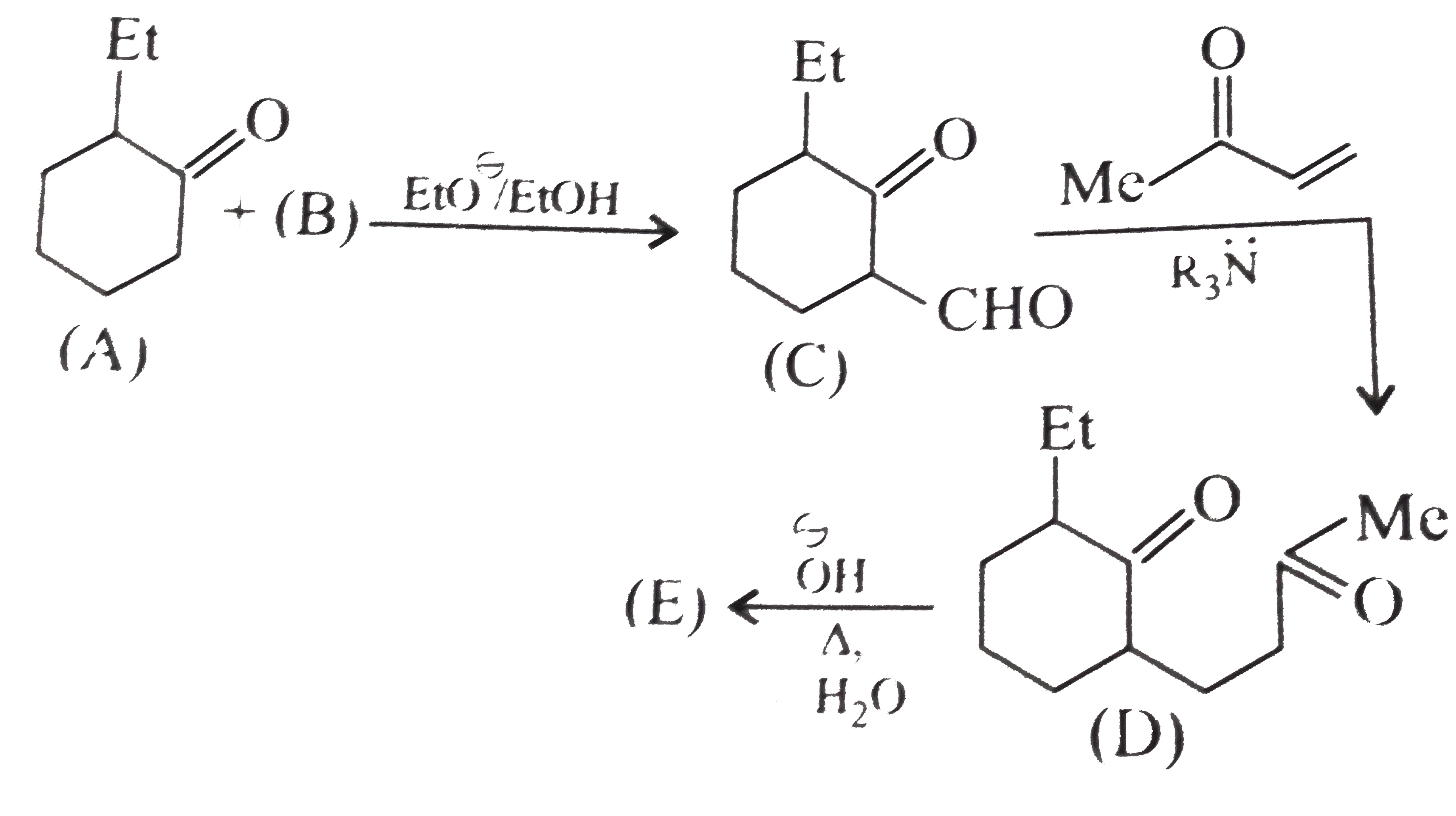D-Glucose and D-fructose both form the same osazone, Which statements are correct about the above reaciton?
Glucose and fructose are epimers.
Glucose and fruc tose are anomers.
The c onfigurations of the OH group at C-3 and c-4 in glucose and fruc tose are same.
The configurations of the OH group at C -4 and C-5 in glucose and fructose are same.
The correct Answer is:C, D
To determine which statements are correct regarding the reaction between D-glucose and D-fructose that leads to the formation of the same osazone, we will analyze the structures and properties of both sugars.
1. Identify the Structures of D-Glucose and D-Fructose:
- D-Glucose is an aldohexose, meaning it contains an aldehyde group (-CHO) at the first carbon.
- D-Fructose is a ketohexose, meaning it contains a ketone group (C=O) at the second carbon.
2. Understand the Concept of Osazone Formation:
- Osazones are formed when sugars react with phenylhydrazine. Both D-glucose and D-fructose can react with phenylhydrazine to form the same osazone due to their structural similarities in the cyclic forms.
3. Examine the Statements:
- Statement 1: "Glucose and fructose are epimers."
- Analysis: This statement is incorrect. Epimers are sugars that differ at only one chiral center. Since glucose and fructose differ at more than one chiral center, they are not epimers.
- Statement 2: "Glucose and fructose are anomers."
- Analysis: This statement is also incorrect. Anomers differ at the anomeric carbon (the carbon that becomes chiral upon ring closure). Since glucose and fructose do not have the same anomeric carbon, they cannot be anomers.
- Statement 3: "The configuration of the OH group at C3 and C4 in glucose and fructose is the same."
- Analysis: This statement is correct. Both sugars have the same configuration at these positions, which contributes to their ability to form the same osazone.
- Statement 4: "The configuration of the OH group at C4 and C5 in glucose and fructose is the same."
- Analysis: This statement is also correct. The configurations at these positions are the same in both sugars.
4. Conclusion:
- The correct statements regarding the reaction of D-glucose and D-fructose forming the same osazone are:
- Statement 3 is correct.
- Statement 4 is correct.
Final Answer:
- The correct statements about the reaction are:
- Statement 3 and Statement 4 are correct.
- D-Glucose is an aldohexose, meaning it contains an aldehyde group (-CHO) at the first carbon.
- D-Fructose is a ketohexose, meaning it contains a ketone group (C=O) at the second carbon.
- Osazones are formed when sugars react with phenylhydrazine. Both D-glucose and D-fructose can react with phenylhydrazine to form the same osazone due to their structural similarities in the cyclic forms.
- Statement 1: "Glucose and fructose are epimers."
- Analysis: This statement is incorrect. Epimers are sugars that differ at only one chiral center. Since glucose and fructose differ at more than one chiral center, they are not epimers.
- Statement 2: "Glucose and fructose are anomers."
- Analysis: This statement is also incorrect. Anomers differ at the anomeric carbon (the carbon that becomes chiral upon ring closure). Since glucose and fructose do not have the same anomeric carbon, they cannot be anomers.
- Statement 3: "The configuration of the OH group at C3 and C4 in glucose and fructose is the same."
- Analysis: This statement is correct. Both sugars have the same configuration at these positions, which contributes to their ability to form the same osazone.
- Statement 4: "The configuration of the OH group at C4 and C5 in glucose and fructose is the same."
- Analysis: This statement is also correct. The configurations at these positions are the same in both sugars.
- The correct statements regarding the reaction of D-glucose and D-fructose forming the same osazone are:
- Statement 3 is correct.
- Statement 4 is correct.
- The correct statements about the reaction are:
- Statement 3 and Statement 4 are correct.
Topper's Solved these Questions
- BIOMOLECULESBOOK - CENGAGE CHEMISTRY ENGLISHCHAPTER - BIOMOLECULESEXERCISE - Exercises (Single Correcttype)
80 Videos
- BIOMOLECULESBOOK - CENGAGE CHEMISTRY ENGLISHCHAPTER - BIOMOLECULESEXERCISE - Exercises (Assertion-Reasoning)
15 Videos
- BIOMOLECULESBOOK - CENGAGE CHEMISTRY ENGLISHCHAPTER - BIOMOLECULESEXERCISE - Exercises (Linked Comprehension)
36 Videos
- AROMATIC COMPOUNDS AND ALKYL AND ARYL HALIDES BOOK - CENGAGE CHEMISTRY ENGLISHCHAPTER - AROMATIC COMPOUNDS AND ALKYL AND ARYL HALIDES EXERCISE - Archives Subjective Type
4 Videos
- CARBOXYLIC ACIDS AND THEIR DERIVATIVESBOOK - CENGAGE CHEMISTRY ENGLISHCHAPTER - CARBOXYLIC ACIDS AND THEIR DERIVATIVESEXERCISE - Exercises Archives (Analytical And Descriptive)
34 Videos
Similar Questions

Which statement is correct about the above reaction ?
View Solution
Which statement is correct about the above reaction ?
View SolutionWhich statements are correct about lactose?
View SolutionWhich statements are correct about sucrose?
View SolutionWhich statement is correct about halogen ?
View SolutionWhich statements is correct about mosses?
View Solution
Which statement (s)is/are correct about the formation of (D) ?
View Solution
Which of the following statements are correct about the above reaction ?
View Solution
Which statements is/are correct about the formation of (E) from (D) ?
View SolutionWhich statement is correct about chemisorption?
View Solution